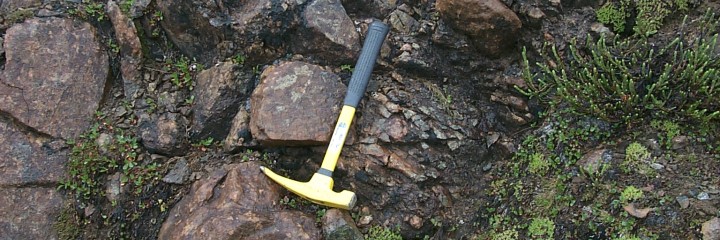Coal Regulatory Program

Regulations Governing Coal Mining in Alaska
Regulatory requirements for coal mines are different than for other types of mines. Spurred by major environmental impacts from coal mining in the 1960's and 1970's, the U.S. Congress passed the Surface Mining Control and Reclamation Act in1977. This act completely restructured the way coal mining was regulated nationwide and greatly increased environmental oversight. This Act provides for the establishment of a nationwide program to regulate surface coal mining and reclamation. It vests exclusive authority in the Department of the Interior, Office of Surface Mining and Reclamation Enforcement over the regulation of surface coal mining and reclamation within the United States. The federal act also allowed individual states to develop coal regulatory program consistent with the federal legislation, and assume primacy over the federal program.
In 1983, The State of Alaska enacted the Alaska Surface Coal Mining Control and Reclamation Act (ASCMCRA) to assume jurisdiction over all coal mining activities occurring within the state. Under ASCMCRA, the commissioner of the Department of Natural Resources has exclusive jurisdiction over surface coal mining and reclamation operations in Alaska.
The purpose of the Act is to:
- protect society and the environment from the adverse effects of surface coal mining operations;
- assure that the rights of surface land owners and other persons with an interest in the land are protected from such operations;
- assure that reclamation of land on which surface coal mining takes place is accomplished as contemporaneously as practicable;
- assure that appropriate procedures are provided for public participation in the development, revision, and enforcement of regulations, standards, and reclamation plans or programs established under this chapter;
- assure that the coal supply essential to the nation's energy requirements and to its economic and social well-being is provided; and
- strike a balance between protection of the environment and other uses of the land and the need for coal as an essential source of energy.
The Law (Alaska Surface Coal Mining Control & Reclamation Act)
The Alaska Division of Mining, Land and Water Management (DMLW) administers the Alaska Coal Mining Control and Reclamation Act and the implementing regulations for coal mining on private, municipal, state and federal land. Alaska's coal program, which must comply with federal standards, comprehensively regulates almost all aspects of coal mining activity from exploration through final reclamation.
Some of the more important parts of the program include:
- An exploration permit is required before any coal exploration activity occurs on any land ownership.
- A new mine proposal undergoes extensive review before any permit is approved. The review includes at least two separate public notice periods, and is highly prescribed by regulation.
- The program includes 65 separate performance standards for a variety of coal mining activities - everything from the placement of signs to statistical requirements for measuring revegetation success.
- DMLW personnel must inspect each operating coal mine an average of once each month.
- Criminal and civil penalties for violation(s) of the act.
Reclamation Requirements
Ensuring effective and timely reclamation is one of the principal goals of the program, and the state regulations include a variety of reclamation requirements. To ensure that reclamation is accomplished, a coal mine operator must submit a reclamation bond before beginning mining. The bond must be large enough to allow the state to reclaim the site should an operator fail to do so.
Some of the important reclamation provisions of coal permits include:
Topsoil
Companies are required to do extensive pre-mining soil inventory and are required to save all soils ahead of mining except those that are unsuitable for reclamation use and those on steep slopes. All of the salvaged soils will be placed back onto reclaimed areas.
Reclamation Plan
Companies are required to submit a detailed plan that shows how the lands disturbed by mining activities will be reclaimed to the approved post mining land use. This includes returning the area to the approximate original contour (surface configuration) and how this plan protects the hydrologic balance for the area.
Reclamation Timing
Mine plans must include details of the mining and reclamation plan that shows the sequence and timing of mining and reclamation operations to ensure that reclamation occurs as contemporaneously as possible after in an area mining is complete.
Revegetation
Any company that intends to mine must provide details on how they will quickly establish a ground cover that will control erosion. This plan must also provide details how an operation will reestablish natural vegetation.
Alaska's coal program is a labor-intensive process for both the mine operator and for the state. The federal government provides one-half of the funding for the program, and the state provides the other half.
Coal Mining in Alaska
Operating Mines
Coal mines have operated in Alaska since 1855. Currently, Alaska's four operating coal mines are located in the Hoseanna and Marguerite Creek Valley east of Healy. These mines are owned and operated by Usibelli Coal Mine, Inc. The company has been mining coal in the Healy area since 1948.
Permitted but Inactive Mines
There are several other approved coal mine permits in Alaska, that are not currently active. Development and exploratory work have been ongoing at the Wishbone Hill Mine near Sutton. The Jonesville and Wishbone Hill mines have approved permits, but are not active. All of these permits have extensive reclamation components, and lands disturbed by exploration or development activities are in an environmentally stable condition.
Most Recently Permitted
In 2012, DMLW approved a new mine permit for the Jumbo Dome Mine. That mine is owned and operated by Usibelli Coal Mine, Inc. and is located north of the current operations in the Hoseanna Creek Watershed.
